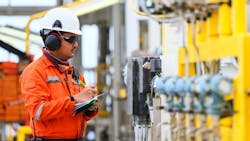Profit From Process Safety Tips
I’ve grown quite fond of the late Trevor Kletz. Not just for being a champion of process safety but also for his extremely quotable adages that drive home the point that safety is an every day, every minute, every step process. One of my favorite quotes is: “There’s an old saying that if you think safety is expensive, try an accident. Accidents cost a lot of money. And, not only in damage to plant and in claims for injury, but also in the loss of the company’s reputation.”
Process safety clearly is paramount. That’s why Chemical Processing devotes more space to the topic than any other trade magazine in the field, with articles from leading authorities, including Kletz (see “Bhopal Leaves a Lasting Legacy”).
For the past four years, CP has run a Process Safety webinar series in partnership with the Mary Kay O’Connor Process Safety Center. This year’s series kicks off on April 2 with Trish Kerin, director, IChemE Safety Centre, Institution of Chemical Engineers. The discussion will focus on learning from incidents — specifically how to get more insight from the information available after an event. Like all our webinars, it will be available on demand.
[pullquote]
On June 18 at 2 p.m. ET, the topic turns to preventing human error in the maintenance of instrumented safeguards. Presenter Angela Summers, president of SIS-TECH Solutions, notes that instrumentation and electrical (I&E) maintenance is typically managed using site-wide policies, practices and procedures. Because I&E equipment is part of the control system and nearly every other layer of protection, the cumulative impact of poor I&E performance can significantly contribute to major events. Four elements of causality — organizational processes, workplace practices, personnel traits, and enabling conditions — affect the likelihood of human error. Understanding and managing these elements improve maintenance performance, instrument reliability, and process safety.
Come fall, we examine lessons learned from other industries. October 1 at 3 p.m. ET, Kerin will explore incidents in very different sectors — theme parks and finance — to reveal learning parallels applicable to process safety.
Kerin helps us close out the year on December 3 with a webinar on how to leverage Occupational Health and Safety (OHS) for process safety. Organizations usually deploy a greater number of personnel on OHS than process safety. She will examine how facilities can leverage the work done in OHS in the past to improve process safety.
In addition to these webinars, Kerin and I host the “Process Safety with Trish & Traci” podcast series. We’ve dealt with several edgy topics including how a Hurricane Harvey Hangover could be to blame for several safety incidents in and around Texas; how a corroded pipe at the Philadelphia Energy Solutions refinery caused catastrophe; and the need for corporate manslaughter charges when workers are killed at a facility.
The latest episode, “Is Inherently Safer Design Really Safer,” unearthed another anecdote that reinforced my adoration for Trevor Kletz: “There’s a story about Trevor,” says Kerin. “He actually used to live in a single-story bungalow because you couldn't fall down a set of stairs if you didn't have any. In theory, it's an inherently safer design. But if you're in a floodplain area, you've got nowhere to go. So you see, there's a tradeoff here — do you give away something for the benefit of something else? You need to determine what risk is the more acceptable one or tolerable one to you.”
You can access that podcast via chemicalprocessing.com/podcasts. The series is available for download on several podcast apps including Apple (formerly iTunes), Google Play, Stitcher and Spotify. Don’t worry if none of those sound familiar to you — you can also listen right from the ChemicalProcessing.com website.
Check Out Combustible Dust Roundtables
Once again in 2020 we are bringing together industry leaders in hazard identification, evaluation and control for combustible dust hazards for two exclusive round-table discussions. Our moderator, Guy Colonna, senior director of the National Fire Protection Association, will challenge our panelists with tough questions in order to increase awareness of the hazards and the available safeguards of fires and explosions within combustible solids processing and handling industries. Register for these roundtables here.
